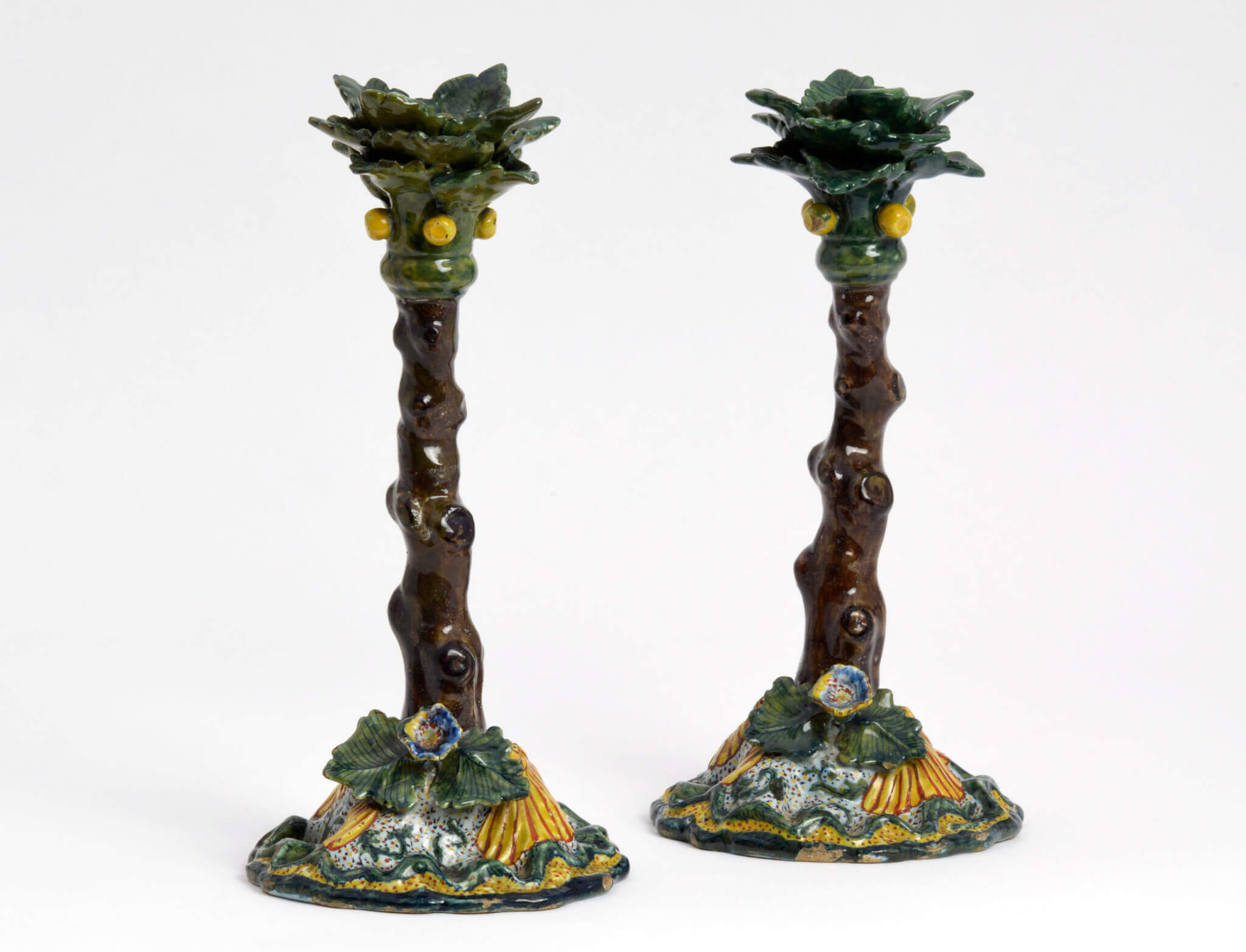D1886. Pair of Polychrome Candlesticks
€26.000,00
Delft, circa 1770
Each marked with an axe in blue for De Porceleyne Byl (The Porcelain Axe) factory
Both modeled as a brown tree trunk growing from a domed red, yellow and manganese dotted foot molded with yellow and iron-red shells, a colorful blossom and two green leaves, and surmounted by a candleholder encircled by several layers of green leaves and four yellow fruits.
Dimensions
Heights: 26.4 and 27.3 cm. (10.4 and 10.7 in.)
Provenance
Alex Huisman Antiquaire, The Hague, and bearing the original label;
Aronson Antiquairs, Amsterdam;
The H.C. Bout Collection, Belgium
Literature
Illustrated and described in exh. cat. Oude Kunst- en Antiekbeurs Delft, 1975, p. 86
无货
描述
Note
Before electrification, candles were the main source of light after dark. However, they were considered a luxury, even in the well-to-do home. Thus, the expression ‘the game’s not worth the candle’ highlights the fact that lighting a candle was like burning money itself. Tallow candles, made of animal fat, were the most commonly used candles. They emitted a foul odor and a black vapor, and burned very quickly. An expensive alternative was the beeswax candle, which had a more pleasant perfume and burned for a longer period of time.
Like the candles, their holders were also very expensive objects. Candlesticks gave a particular splendor to the parties and ceremonies of wealthy households. For example, candlesticks were placed in front of mirrors in order to increase the intensity of the light in French King Louis XIV’s Hall of Mirrors. Although various shapes of candlesticks have been produced in Dutch Delftware from the 1680s onwards, this brightly colored and richly modeled pair of candlesticks from the eighteenth century is rare. Often, Delft candlesticks are blue and white with traditional European forms, and are decorated with chinoiserie designs that are borrowed from Chinese Transitional porcelain. However, the shape of the present pair of candlesticks draws from rococo silver precedents that were richly decorated with scrolling rocailles, shell, floral, fruit and scrolling foliate motifs. The interest in cultivated nature blends perfectly well with the trompe l’ceil tradition. Since the earthenware candlesticks are smaller in size than the silver examples, they were possibly less suitable for the dinner table. However, these colorful alternatives to the shiny silver must have been a feast for the eyes in other places of the interior.
Condition
-
- One stem broken and repaired
- Repairs to extremities




